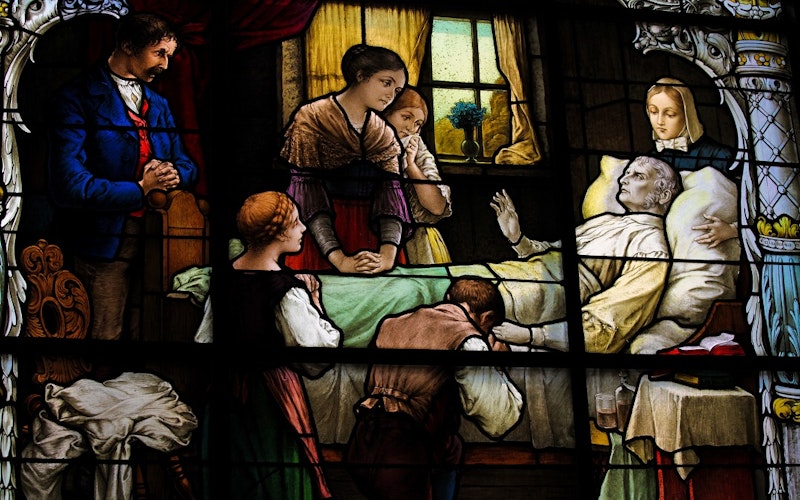
Culture At Large
Should we be “redesigning” death?
“With just a little attention … he might be able to refract some of the horror and hopelessness of death into more transcendent feelings of awe and wonder and beauty.”
These words, taken from the California Sunday Magazine article “Death, Redesigned,” speak to a new understand of mortality in our culture. It doesn’t take much experience with death to understand how daunting the subject truly is. Death is not a friend. What is more, the subject of death has the tendency to cloud the air. When we think about death, the harrowing events that follow death and the unforgiving space of grief associated with death, we are often less than even-keeled when it comes to our emotions.
In Jon Mooallem’s article, he profiles three individuals, each of whom suggests that the ugly, overwhelming nature of death has more to do with how we conceive of it than the thing itself. Designer Paul Bennett, corporate executive Paul Gaffney and Zen Hospice Project director B.J. Miller all believe that the circumstances surrounding death, at least the environmental ones, are controllable to a degree. With different ways of planning funerals, a different vision for the aesthetics of hospitals and an app called After-Gifting (through which someone could arrange for gifts to be given to family members years after his or her death), these three seek to bring new meaning to what it means to depart. It becomes clear in the article that not everyone is on the same page - Gaffney is more interested in the consumer allure of a product than the meaning-making of Bennett and Miller - yet all three creatives have a similar vision: to make death more palatable.
This begs the question: Should death be redesigned? Ultimately, we can all agree that death is painful. Often funerals can be the most joyless events on the face of the earth. But is re-configuring the experience of death adequate or even achievable?
We can have awe and wonder in the face of death, but only if the awe and wonder have the futuristic purview of the Kingdom.
As Christians, we understand death as representative of two realities. First, that we live in a broken world. The pain and mourning that we experience when we lose a loved one reminds us that things are not as they were meant to be. Second, brokenness doesn’t prevail. Christ’s resurrection proclaims that death no longer has its sting.
The impulse to redesign death is a good one, stemming from recognition of the brokenness that exists in the world. Death is a grim reminder that, as hard as we may try, we cannot retreat from the pain of loss. However, to conclude that the means by which we confront this pain is to reassign meaning to our mortality is to ignore the second truth: that death doesn’t have the final say. Yes, we can have awe and wonder in the face of death, but only if the awe and wonder have the futuristic purview of the Kingdom.
For followers of Christ, death is an open door. It’s certainly true that death should spur us toward wonder, as Bennett implores, but this only happens by virtue of what it tells us about life. Specifically, what it tells us about life in Christ.
In this sense, the effort to redesign death inadvertently cheapens life. When we repudiate - whether intentionally or unintentionally - the realities that death is meant to reveal, we ultimately indulge in denial. Life becomes a ruse and death is ignored. To redesign death is to leave it altogether unattended. Though painful, death doesn’t need new meaning, but properly understood meaning. For believers, the pain of death and the experience of mourning are best understood as seasonal realities, ones inevitably subject to the resurrection power of the living Christ.
Topics: Culture At Large, Science & Technology, Technology, Gadgets, Philosophy, Theology & The Church, Theology, News & Politics, Social Trends